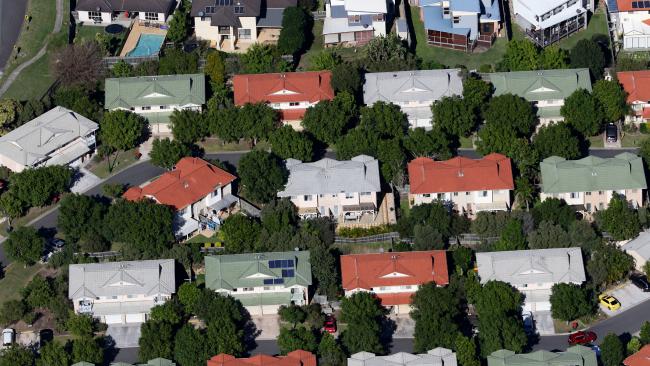
The Australian housing market has had a weak start to the year.
THE Reserve Bank has kept the official cash rate on hold at 2 per cent in its first meeting of the year, but economists are tipping further cuts in the coming months.
The central bank last moved in May 2015, when it cut the official cash rate by 25 basis points to its historic low, following an earlier cut in February.
In his statement, RBA Governor Glenn Stevens said low interest rates were supporting demand, while tougher lending standards were helping to contain risks in the housing market.
“The pace of growth in dwelling prices has moderated in Melbourne and Sydney over recent months and has remained mostly subdued in other cities,” Governor Stevens said.
According to CoreLogic RP Data, capital city dwelling values have drifted 0.6 per cent lower over the past three months, while capital city home values have risen just 0.7 per cent over the last six months.
CoreLogic RP Data head of research Tim Lawless said the housing market was playing out exactly as the RBA would have hoped: “Losing steam without a collapse in values.”
“The RBA probably doesn’t need to worry too much about overstimulating the housing market via another rate cut,” Mr Lawless said.
“Mortgage rates are already higher than a year ago due to the higher capital requirements implemented by APRA and the pace of investment growth has fallen below APRA’s 10 per cent speed limit imposed in December 2014.
“Other factors adding to the hold argument were likely to have been around labour markets which have been showing a healthy trend based on the Bureau of Statistics data and retail sales showing a better appetite for households to spend.
“With heat in the housing market no longer likely to be a major concern for the RBA, a major obstacle has been removed from preventing rate cuts and we may see the cash rate move lower later in the year.”
AUCTION CLEARANCE RATES DROP
In Sydney, the auction clearance rate for the weekend just gone has hit its weakest level in a decade at 43 per cent, down from nearly 80 per cent a little over a year ago.
“Falls that big, that fast, make us pay attention,” the Commonwealth Bank wrote in an investor note today.
Property market research firm SQM found the total number of residential property listings fell to 342,899 in January — a 0.2 per cent decrease on the previous month.
Sydney recorded the largest monthly fall in stock levels, falling 5.2 per cent in January to 22,333 properties for sale.
SQM says median asking prices in Sydney have risen considerably over the past 12 months, with median asking prices up 8.5 per cent for houses and 11.7 per cent for units.
“As we enter into the new property season it’s clear that our latest indicators are suggesting a continued mixed market across the nation,” SQM managing director Louis Christopher said.

LJ Hooker says stock market volatility is driving some investors back to property.Source:News Corp Australia
“On the one hand there is an overhang of stock on the market in Sydney, which is a symptom of the slowdown in the market there that started the second half of last year.
“While on the other hand Melbourne does not appear to have any overhang, and so will be entering the new season (with) less stock on the market than what has been the average for the past five years. Our forecast ... that Melbourne would outperform Sydney this year, seems to be very likely now.”
RATE CUT LIKELY SOON
AMP Capital chief economist Shane Oliver said the RBA was likely to cut the cash rate again in the months ahead.
“December quarter inflation was low but in line with RBA expectations, recent Australian economic data has been OK and it’s doubtful that the latest bout of financial and commodity market turmoil has been enough to move the RBA out of its ‘chilled out’ state,” Dr Oliver wrote in a client note.
“However, the latest round of worries about global growth coming at a time when domestic growth remains sluggish, national income is being hit by the continuing slump in commodity prices, the housing sector is losing momentum and inflation is low, are likely to see the RBA strengthen its easing bias.”
LJ Hooker chief executive Grant Harrod said buyers were becoming more confident and the volatility of the stock market was bringing investors back to real estate.
“Reports about the slowing of price growth has seen buyers become more confident and hence started their property search in earlier in January than previous years, which is a good sign,” Mr Harrod said.
“We have to be mindful January is not traditionally a period with a lot of listings, so it is probably too early to give a true reflection, however, indications have been encouraging. Vendors can see demand is still there and the overall economic fundamentals are good for real estate.”
LJ Hooker national research manager Mathew Tiller said he expected the RBA to act around midyear, depending on economic conditions and property price growth.
“If data shows prices have in fact begun to cool in Sydney and Melbourne, this will give the RBA more confidence that they can cut rates and it won’t overheat the housing market like we have seen over the past couple of years,” Mr Tiller said.








